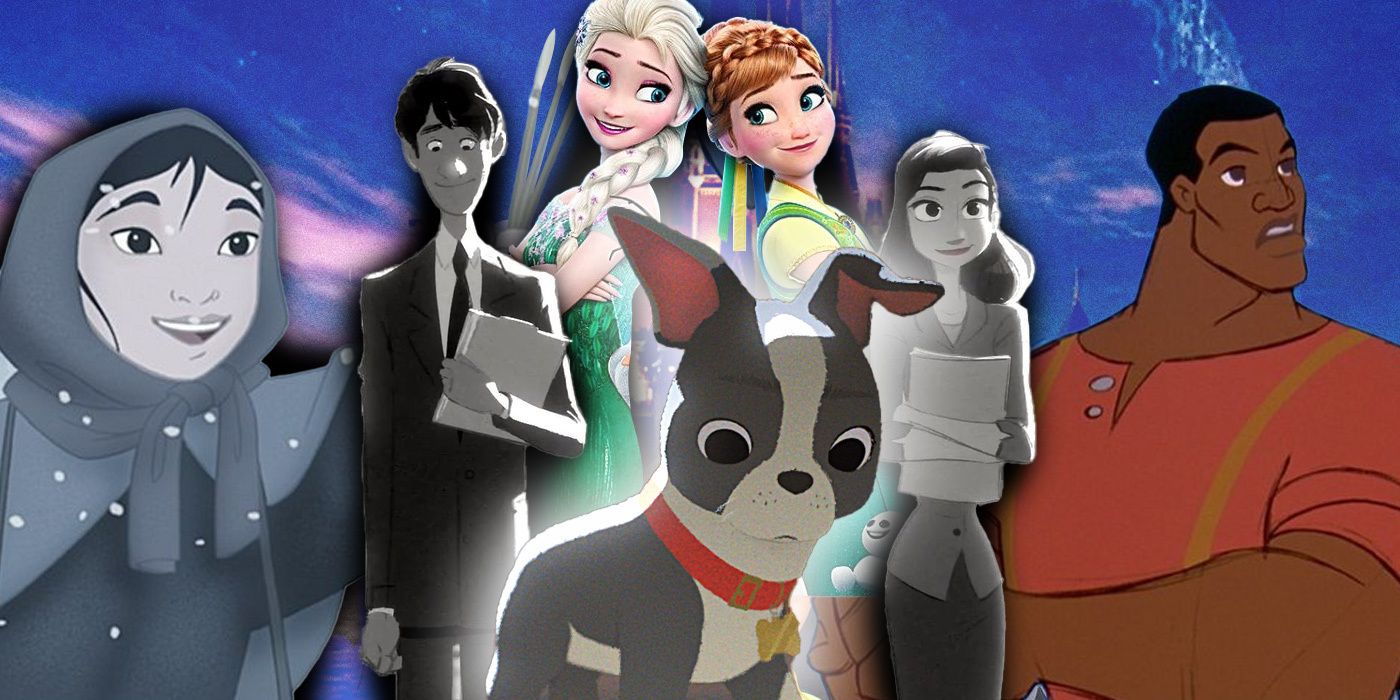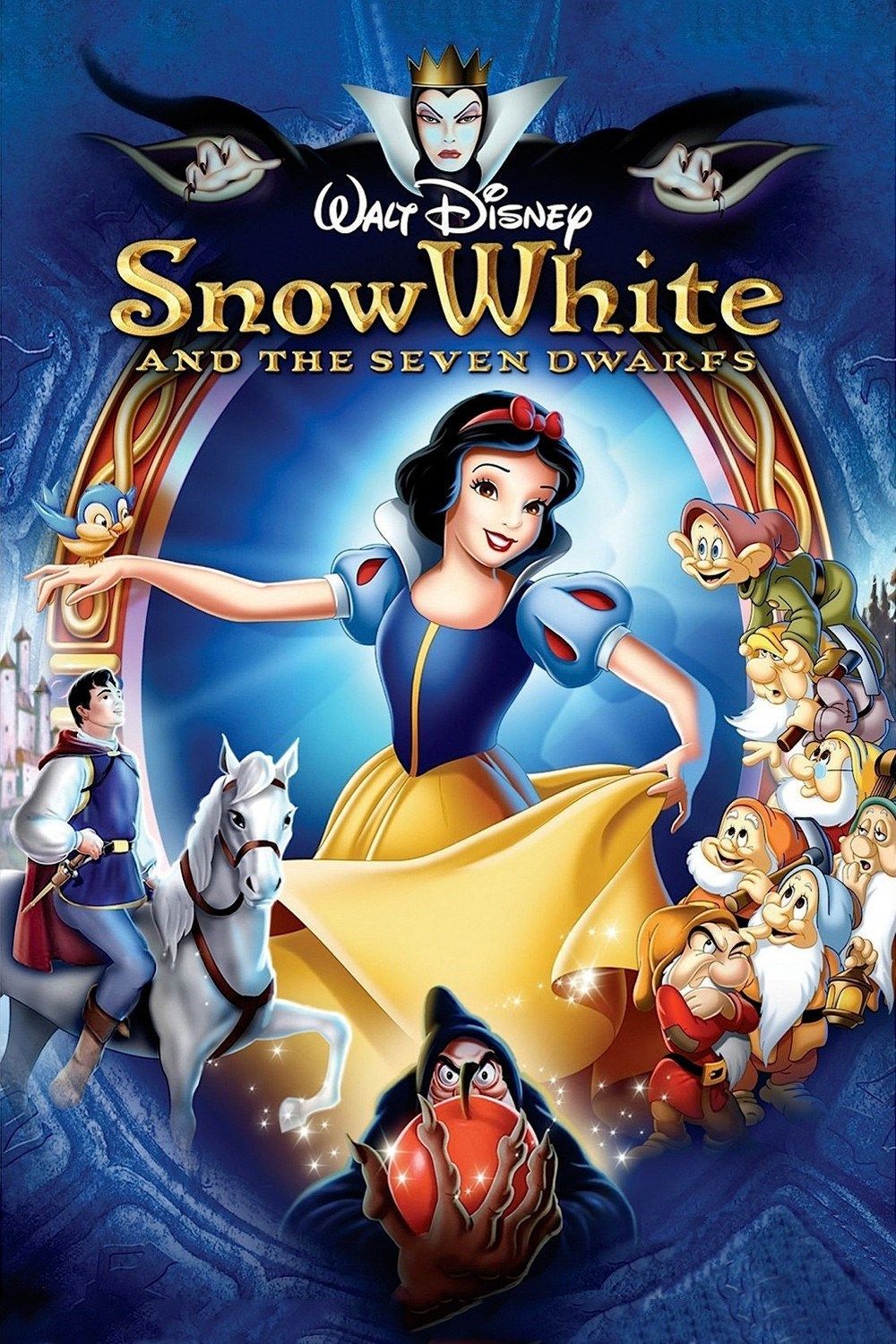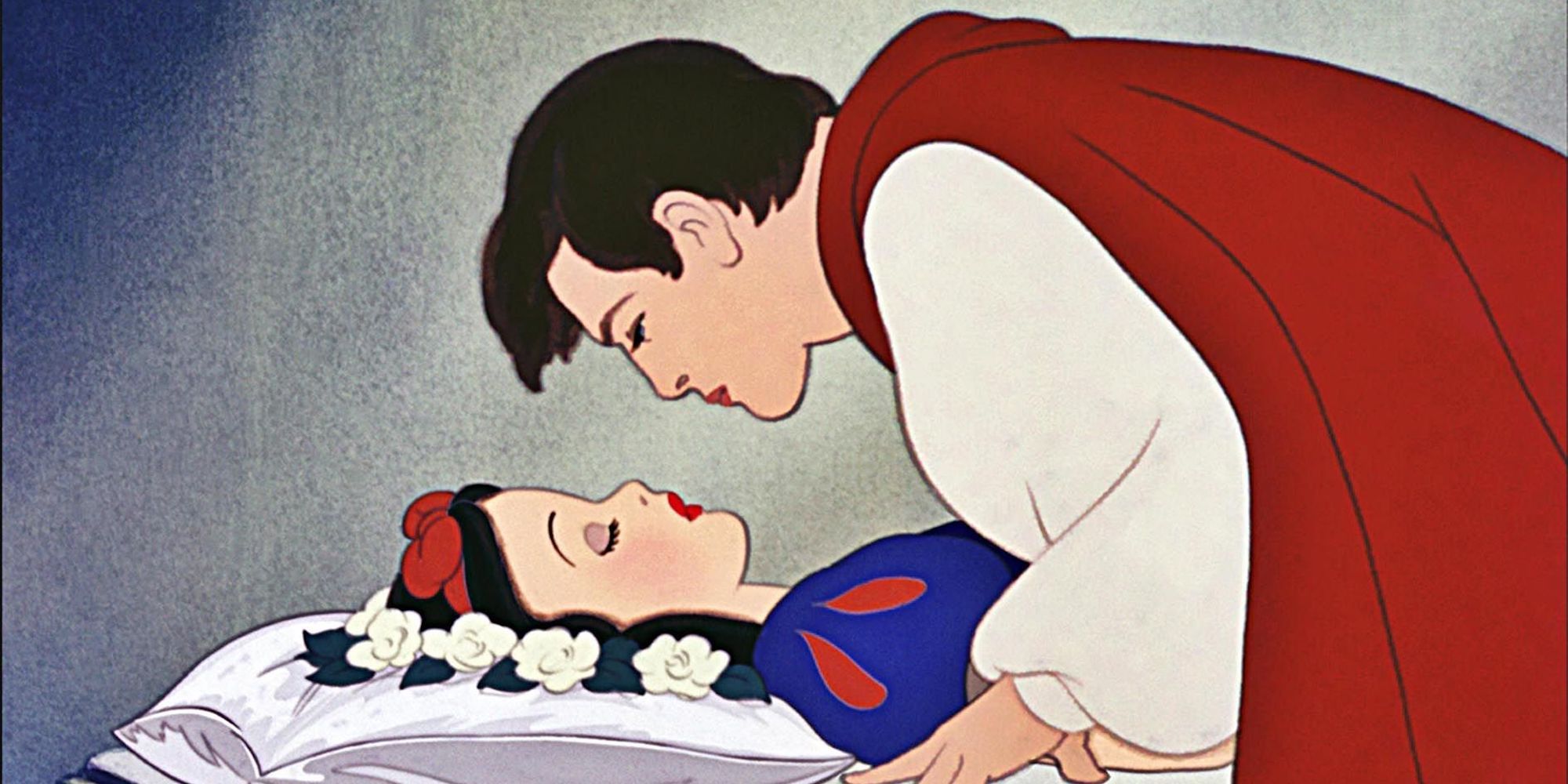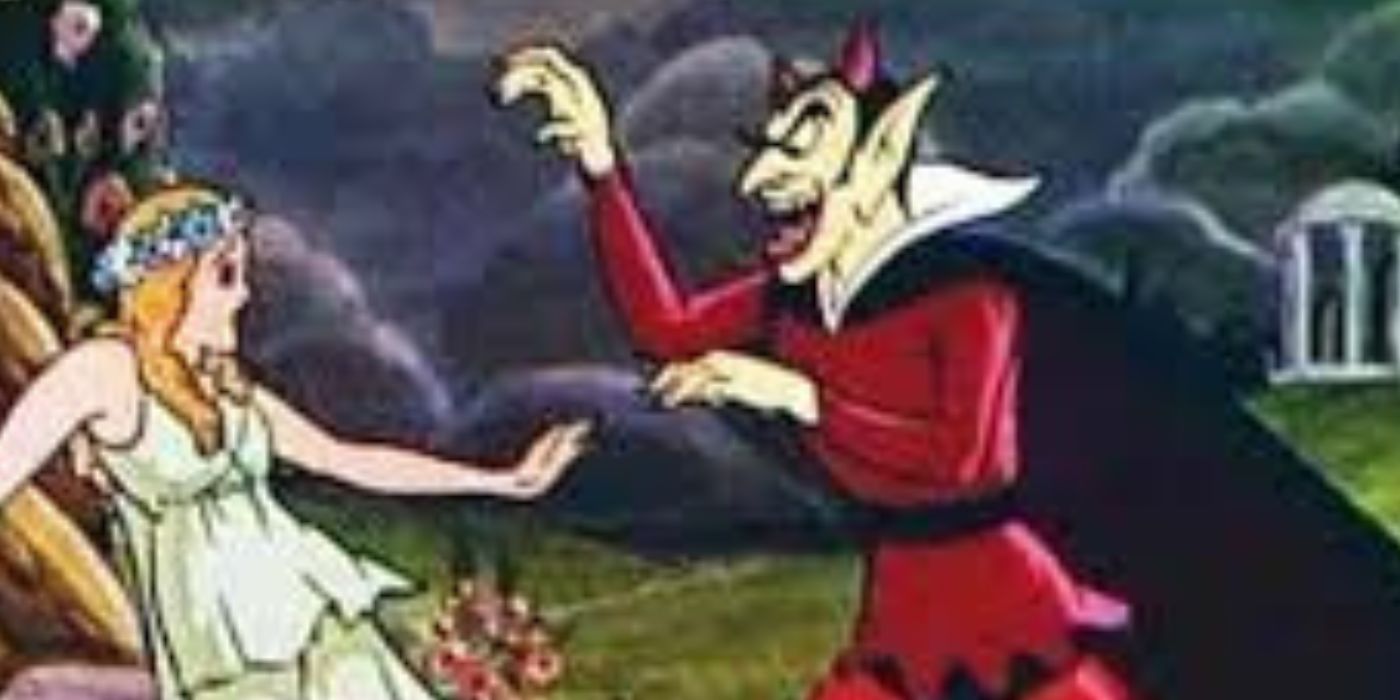When it comes to animation, it’s nearly impossible to find a film more important than Disney’s Snow White and the Seven Dwarfs. Not only did it prove that the genre could hold up in the feature film format, it was responsible for shifting the public perception of Disney from a “Mickey Mouse” company to a major player in the world of movie-making. Artistically, it’s beautiful and remains one of the greatest pieces of animation ever made, even nearly 90 years later. With a highly anticipated and discussed live-action remake on the way and with the original receiving a gorgeous remastering for Disney Animation’s 100th anniversary last year, the picture’s accomplishments cannot be understated.
While Snow White (Adriana Caselotti) is the first official entry in the famous Disney Princess Line-up, the character who actually birthed the royal practice was one many have forgotten, and one who was vital to Snow White’s existence. Presented as a Silly Symphonies short, The Goddess of Spring was a challenging undertaking for the studio’s animators, and while many lessons were learned from it, the piece remains both significant and beautiful.
‘The Goddess of Spring’ Was an Important Part of ‘Snow White’s Development
Creating a full-length feature film was already uncharted territory, but that wasn’t Snow White’s only groundbreaking accomplishment. Disney changed the game when it came to animated shorts, especially with the Mickey Mouse shorts, but animating life-like, human characters was new for the studio. According to the Walt Disney Family Museum, Walt Disney decided to test the waters by adapting another fabled tale as part of the Silly Symphonies, the tale of Hades (or, as Roman mythology names him, Pluto) and Persephone.
The age-old story follows Persephone, a deity who brings Earth its spring. Singing with birds, surrounded and adored by nature itself, from the time Persephone appears on-screen, she is the personification of what would become the idea of a Disney princess. But her peaceful and lovely life is torn apart when Pluto, God of the Underworld, invades her kingdom. He drags her down to the Underworld and crowns her as his queen. Though presented as a devilish figure, Pluto is sympathetic toward her plight, and the two reach an agreement that will allow her to remain on Earth for six months out of the year. But her royal status goes beyond her questionable marriage to Pluto. Smithsonian Magazine states that Persephone is actually the daughter of Zeus in mythology, making her not just an inspiration for Disney Princesses, but one herself. It changes very little from the myth that inspired it, but it truly cemented a lot of Disney Animation’s most famous tropes. From an angelic-like beauty who connects with the world around her, to a sharp and wicked tyrant who rips her, from her happiness, it feels very much like a classic Disney film, condensed into a nine-minute short. But for all its accomplishments, The Goddess of Spring did have many shortcomings.
Disney Wasn’t Happy With ‘The Goddess of Spring’
Disney’s animation studio was well aware that The Goddess of Spring was going to be unlike anything they’d ever done before. It’s a fascinating effort indeed. The colors are vibrant and balance well with the vintage animation style. Additionally, the design of Persephone herself is interesting for Disneyphiles. Though an early rendering for the studio, her look serves as foreshadowing of the characters to come. Her facial design is a predecessor to characters like Cinderella and Pinocchio’s Blue Fairy. The short also sets up many of Snow White’s tropes. As Smithsonian Magazine points out, her personality manifests through actions that are incredibly similar to Snow White’s. There’s even a shot of Persephone interacting with a bird that is almost identical to another frame in the full-length feature to come.
With her design, the animators set several standards that remain in place today. As the Walt Disney Family Museum explains, animators implemented the use of character design sheets. While it may sound simple by today’s standards, it was revolutionary for its time. The artists created a page filled with the design of the character from all angles, which ensured her appearance would be consistent throughout the picture. Still, for all the short’s accomplishments, it proved that there was still plenty of work to do.

Related
Walt Disney Animation’s Revival Era Short Films, Ranked
From the monochrome streets of the big city to the valleys of Scotland.
The Walt Disney Family Museum explains that Disney wasn’t thrilled with the final product when it came to the movements and actions of Persephone and Pluto. Lead animators Ham Luske and Les Clark were in charge of animating Persephone. Luske’s wife, Frankie, modeled the character’s actions to give the artists a point of reference. But translating the complicated movements of a human being to a fully animated character such as Persephone was not easy, and the museum claims the actions were “deemed too rubbery.” Indeed, watching the short today, the character’s movements are too cartoonish even for a cartoon. There’s almost an uncanny valley aspect to Persephone due to the fact that her design is so human, while her actions are not. But the project wasn’t a loss by any means. According to the Walt Disney Family Museum, the studio took the lesson they learned and made perfecting human movement a primary goal.
Additionally, the animators had proven their efforts to be close enough to impress the boss! As D23.com explains, Ham Luske was the first animator assigned to Snow White by Walt Disney. A letter from Disney proclaimed, “From now on, Ham Luske is definitely assigned to Snow White.” And as the team prepared to move forward from The Goddess of Spring, plenty of other challenges would soon arise.
‘Snow White’s Production Had Highs and Lows
According to History.com, the story of Snow White had long fascinated Walt Disney, having seen a silent film version of the story that starred Marguerite Clark as a teenager. Prior to Snow White, the only other full-length animated feature film was a 1926 picture called The Adventures of Prince Achmed. However, the movie was even cruder in style than The Goddess of Spring, meaning that it was up to Disney’s animators to continue to work out the format. There were plenty of highs and lows along the way. According to D23’s publication, Luske relied even more on live model footage to create realistic staging for Snow White herself, which certainly helped create the character audiences know and love today. The production also led to the invention of the multiplane camera, which would go on to revolutionize animation for decades to come. However, production had plenty of surprise challenges for the team. Per the Walt Disney Family Museum, the Prince (Harry Stockwell) proved difficult. While the character only appears, collectively, for two minutes throughout the film, he was initially intended to be in much more.
Disney and the film’s creators wanted a much more active Prince. His initial meeting with Snow White was supposed to see the character share “romantic banter” with the princess, while the latter half of the film would see him face off with the queen. The sequence would have seen the prince captured by the queen, who would explain her plan to the prince. He would break out of his prison and head out to find Snow White. Interestingly, this arc would find its way into Disney’s epic, Sleeping Beauty. However, Disney began to worry that the prince’s role was becoming too complicated, and, what’s more, the character proved far too difficult to animate. While the animation process had improved since The Goddess of Spring, the art form was still primitive, and the creatives decided to cut the prince’s presence. But the film, of course, went on to become a success, showing the world just how far the animators had come since The Goddess of Spring.
‘The Goddess of Spring’ Set ‘Snow White’s Team Up For Success
Following years of success, Luske eventually became a feature director for the studio. A biographical article from the Walt Disney Family Museum says that Les Clark found equal success as one of Disney’s most trusted animators. After also working on Snow White, he brought to life some of the company’s most beloved characters, including Cinderella, Pinocchio, Alice, and Tinker Bell. He also served as a sequence director on Sleeping Beauty and went down in animation history as one of Disney’s revered “Nine Old Men.” As a whole, Snow White paved the way for the Disney organization to become the company audiences know today. Sure, they’d had plenty of success with their various shorts, but Snow White revolutionized the industry, something only made possible due to The Goddess of Spring. And, when Snow White received one of its biggest home media releases, audiences were reminded of the short that started it all.
‘The Goddess of Spring’ Was Included In ‘Snow White’s First DVD Release
When Snow White received its first DVD release on October 9, 2001, Variety reported that it far surpassed Disney’s prior DVD rollouts, surpassing one million copies sold within 24 hours. The landmark release not only debuted formerly deleted scenes from Snow White; it reintroduced viewers to The Goddess of Spring. Included as a special feature, the DVD explained the film’s significance and included a remastered version of the short. There’s something very special about this packaging. While both The Goddess of Spring and Snow White are now streaming on Disney+, the short being paired with the feature film is a wonderful way to experience the evolution of Disney’s animation and the “full story” that is often overlooked.
The Goddess of Springmay not be Disney’s most remembered or beloved animated venture, but it’s one of the most important. The character of Persephone not only started the grand tradition of Disney Princesses; she also served as an artistic and technical lesson. The short and its characters helped Disney’s animators perfect their class and paved the way for the studio to become the genre leader, a title it still holds today. Disney owes much of its success to its forgotten princess and the beautiful work that is The Goddess of Spring.
The Goddess of Spring is available to stream on Disney+ in the U.S.

Exiled into the dangerous forest by her wicked stepmother, a princess is rescued by seven dwarf miners who make her part of their household.
- Release Date
- February 4, 1938
- Director
- David Hand
- Cast
- Roy Atwell , Stuart Buchanan , Adriana Caselotti , Zeke Clements , Eddie Collins , Pinto Colvig
- Runtime
- 83













